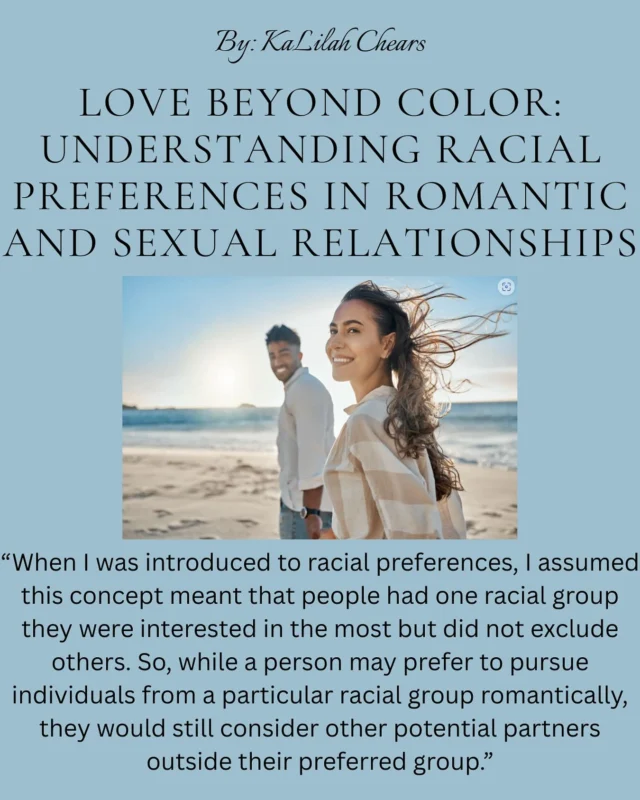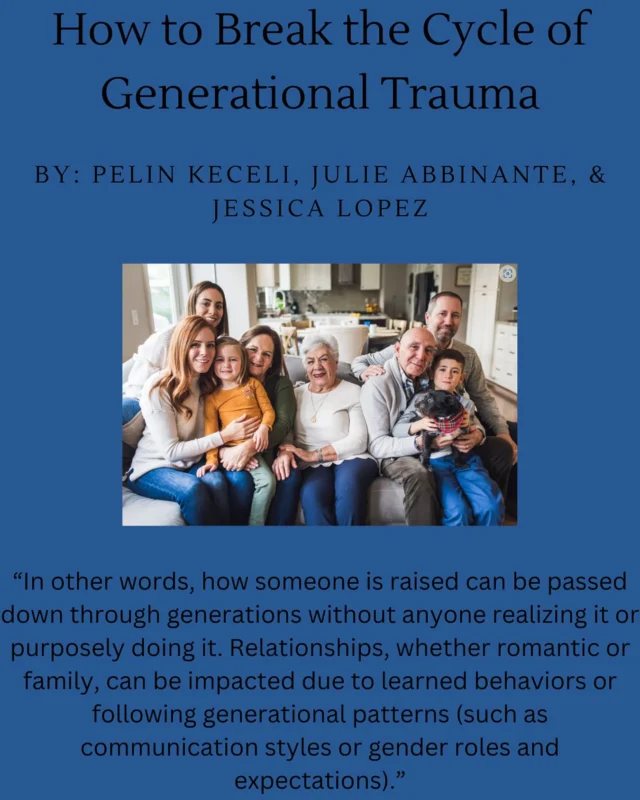Is pornography use harmful to relationships? An ever growing body of research indicates that pornography poses a substantial threat to individuals, couples, families, and society. Many studies conclude that a major impact of pornography is that it causes individuals to turn away from connection in the relationship. The question of whether pornography is harmful has been of increasing interest in the mental health field as pornography use is prevalent in today’s society, especially among emerging adults (Hesse & Floyd, 2019; Vaillancourt-Morel et al., 2020). A study by Willoughby et al. (2021) found that on average, 46% of men and 16% of women view pornography every week. Due to rapid technological advances, pornography use has become even more widespread in the last 20 years. This upward trend was highlighted in the same study, which found that men under 30 are over 2x as likely to watch pornography daily than men over 30. At the same time, the study found that 1 in 5 couples report engaging in conflict related to pornography, 1 in 4 men report hiding their pornography use from their partner, and 1 in 3 women report experiencing worry related to their partner’s pornography use (Willoughby et al., 2021). The topic of pornography use is a major issue for a significant number of couples and dating individuals, and it is a modern issue, one that we as a society are learning to navigate together.
Overall, the negative effects of pornography use on relationships appear to vastly outnumber the positive effects. However, every relationship is different, and there are a myriad of factors to consider when assessing the impact of pornography use on your relationship. For example, religion is one such factor that has been studied in relation to pornography use outcomes. Studies found that religious individuals who use pornography tend to have higher levels of depression, lower levels of happiness, and higher levels of distress, likely due to the fact pornography use often does not align with more traditional values (Willoughby & Dover, 2022). Given the number of factors at play when considering the effects of pornography use on couples, there is no one clear answer to whether or not pornography use is harmful or beneficial. The goal of this blog post is to provide you with knowledge of the current research so that you can make an informed decision regarding the role of pornography in your relationship and/or personal life.
There are still gaps in the research as this area of study is relatively newer, especially when it comes to considering the ways in which pornography affects women and couples (Litsou et al., 2021). Research has been slow to expand in these areas in part due to the fact that men view pornography significantly more often than women, resulting in research relating to women and couples being overlooked, difficult to find qualifying participants for, and overall a bit more complex (Litsou et al., 2021; Brown et al., 2016). However, in past several years there have been many new studies in the research literature that are beginning to address these gaps. Due to the recency of this area of study, it is necessary to underscore a few major limitations present in the current literature. Firstly, many researchers do not clearly or consistently define what pornography is (in other words, what they are measuring) in their studies (Litsou et al., 2021; Kohut & Campbell, 2019). This means that different types of pornography or other sexually explicit materials (e.g. social media accounts, erotica, etc.) are often all grouped together in the research, even though they might lead to different outcomes for couples and individuals. Secondly, pornography research typically relies on self-report data in which participants may not respond truthfully or may not accurately remember how often or for how long they watched pornography (Kohut & Campbell, 2019). Lastly, the current literature is incredibly lacking when it comes to LGBTQ+ couples and individuals. The research discussed in this post focuses primarily on heterosexual couples and individuals solely because there are not a sufficient number of equivalent studies to pull from that centered on the LGBTQ+ population.
Negative Effects: Outcomes For Couples
Drs. John and Julie Gottman are some of the most well known clinicians and researchers regarding couple relationships in the world. They have conducted over 40 years of research with thousands of couples and have published over 200 academic journal articles and written 46 books that have sold over a million copies in more than a dozen languages. Some clinicians and researchers have taken the perspective that porn use is harmless and that it may be a way to increase to intimacy in couple relationships. However, the Gottman’s published an open letter on porn in 2016 that refutes these assumptions:
“In summary, we are led to unconditionally conclude that for many reasons, pornography poses a serious threat to couple intimacy and relationship harmony. This moment calls for public discussion, and we want our readers around the world to understand what is at stake.”
Pornography use can be a maladaptive form of coping with feelings of loneliness and disconnection for many, especially for those who do not live with a romantic partner (Hesse & Floyd, 2019; Daspe et al., 2018). Although pornography briefly alleviates feelings of loneliness, after viewing pornography, viewers tend to feel even worse (Hesse & Floyd, 2019). For those in relationships, this association between pornography use and loneliness could be due to a variety of mechanisms. In other words, pornography use may impact a factor such as relationship quality, which in turn impacts loneliness levels. In fact, a study by Huntington et al. (2021) found an association between viewing pornography and lower relationship quality overall. The study found an association between pornography use and lower relationship adjustment, dedication, and emotional intimacy regardless of gender. In terms of dedication, pornography was also found to be related to a decrease in trust and increase in affairs (Gottman, 2021), as well as an increased likelihood of divorce (Brain, heart, world, 2022).
The study by Huntington et al. (2021) goes on to say that the more a person watches pornography alone, the less sexual intimacy they tend to have with their partner. These findings support the idea discussed previously that when individuals watch porn, they are turning to their screen for connection, sexual gratification, and intimacy instead of turning toward their partner, even when one is viewing pornography that does not include partnered sexual acts (Gottman, 2021). It is worth emphasizing that pornography is about instant gratification, not relationships. One cannot replace the need for human connection with pornography. Findings from other studies also indicate that pornography itself is a core issue affecting couples. A study by Brown et al. (2016) found that even when partners were accepting of the other’s pornography use, higher levels of use were still associated with adverse effects, such as lower levels of sexual satisfaction.
According to the Gottman Institute, not only is pornography likely to decrease the quantity of sex in relationships, it also can decrease the quality as well. Understandably, decreased quantity and quality of sex in a relationship may negatively affect overall relationship quality and satisfaction. Another study found that heterosexual couples who had greater differences in pornography use rates between partners were associated with lower relationship satisfaction, stability, and communication, along with increased interpersonal aggression (Brown et al., 2016). In other words, greater variance between each partner’s level of pornography use is linked with negative outcomes. However, when looking at the current literature, pornography use is inconsistently linked with relationship satisfaction and quality in research. Willoughby & Dover (2022) believe that this inconsistency is due to the significant impact of contextual factors on satisfaction and quality, with the directionality of these relationships being equally inconsistent.
The authors Vaillancourt-Morel et al. (2020) found that although pornography use is associated with positive sexual outcomes for women regardless of their partner’s sex, it is actually negatively related to partner’s sexual desire and partnered sexual activity for men. This study focused on same day dynamics, so this data regarding pornography use, sexual desire, and sexual activity was recorded on the same day it occurred. This means that pornography use had immediate day-to-day effects on couples, although the authors found that prior use of pornography and prior levels of sexual desire were unrelated to present day dynamics. The authors highlight that although they hypothesize men’s pornography use leads to low partner desire in heterosexual relationships, the opposite may actually actually be true as the directionality of the relationship could not be determined in this study.
Negative Effects: Couples Watching Together
Recent research has unveiled a host of negative effects of pornography use on romantic relationships. When it comes to couples viewing pornography together, a study by Huntington et al. (2021) found that couples increasing their shared use of pornography led to contention. This contention was potentially due to the pornography use itself or the overall increase in psychological aggression (e.g., doing something to spite one’s partner) associated with viewing pornography. This relationship between increased use of pornography together and psychological aggression was present for partners regardless of gender. Additionally, the same study found that higher mean levels of watching pornography together were associated with experiencing physical aggression from one’s partner regardless of gender. The article notes that this association between pornography and aggression could be due to pornography modeling aggression to couples or that couples experience conflict due to conflicting feelings about pornography itself. The authors note that this aggression may also spill over into other contexts outside of sex as well. Moreover, the documentary Brain, heart, world (2022) discusses how pornography often sets the bar for sexual expectations. When couples watch pornography together, there may be pressure to perform the behaviors seen on screen that they might not want to engage in (Litsou et al., 2021). In fact, Willoughby et al. (2021) found that 30-40% of individuals in relationships feel pressure to engage in sexual behaviors depicted in pornography. Therefore, when viewing pornography together, it is imperative that couples are aware of the ways in which the negative effects such as increased aggression or unhealthy expectations can manifest.
Negative Effects: Neurobiology
Not only are there negative effects of pornography on couples viewing pornography together, there are also negative effects that can arise from individuals watching pornography alone. These repercussions affect the individual, but can also spill over and impact their relationships as well. In the most fundamental sense, pornography changes us at a neurobiological level in a variety of ways. When individuals engage in behaviors that ensure survival (e.g., sex, eating, drinking), the reward system in our brain is activated and dopamine is released to ensure we have a pleasant association with this behavior and continue to engage in it to survive. When it comes to sex, the hormone oxytocin is also released in the brain upon orgasm. Oxytocin is commonly referred to as the “cuddle hormone” as it is associated with social bonding (Brain, heart, world, 2022). According to the literature, individuals who are experiencing loneliness may turn to pornography to cope since viewing pornography results in the release of dopamine and oxytocin (Hesse & Floyd, 2019). However, after orgasming, when the rush of oxytocin wears off, the viewer is left feeling even more lonely than before as they realize they were not bonding with an actual person and are still alone (Brain, heart, world, 2022). This same documentary highlighted how the release of oxytocin when watching pornography causes people to bond with their screens, even if they are viewing “ethical pornography.” This resulting feeling of increased loneliness caused by pornography use is associated with depression and increased subsequent porn use to keep gaining that temporary relief (Brain, heart, world, 2022; Hesse & Floyd, 2019). In this way, pornography use can easily become a vicious cycle since the reward pathway of the brain is being overly activated by a supernormal stimulus.
Supernormal stimuli are stimuli that are exaggerated in some manner in order to elicit a stronger neurobiological response than the typical version would. Thus, it is unsurprising that there is such a risk that individuals may begin to greatly prefer pornography, given its exaggerated nature. For those who view pornography regularly, there is also the tendency to need more and more extreme forms of pornography in order to achieve the same level of arousal, a form of tolerance that is often seen with addiction (Brain, heart, world, 2022; Gottman, 2021). The current research indicates that certain people, heterosexual men in particular, are at increased risk for developing a dependence on pornography wherein pornography becomes the only stimulus that can cause arousal and orgasm (Gottman, 2021; Vaillancourt-Morel et al., 2020). Part of this dependence on pornography is the result of brain structures adapting to the increased consumption of pornography. The more a person engages in an activity, such as watching pornography, the more specialized regions of the brain become in order to effectively process what we are doing or seeing. So when people spend a significant amount of time viewing pornography, the parts of the brain that become activated when watching pornography enlarge, and the parts of the brain that are not involved with this behavior shrink. In this way, the human brain can become dedicated to viewing pornography, resulting in any other stimulus holding little interest (Brain, heart, world, 2022).
Negative Effects: Pornography and Violence
Pornography can (and often does) set horrific sexual expectations (Brain, heart, world, 2022), especially considering that so many people in today’s world view pornography, including young adults who may be learning about sex through pornography (Hesse & Floyd, 2019). According to the documentary Brain, heart, world (2022), porn teaches people that sex is violence. The documentary highlights that in pornography, 95% of the time when someone is hit, there’s either no reaction or a reaction of pleasure. Due to the normalization of violent and criminal pornography, the documentary argues that pornography teaches men to be violent towards women and teaches women they should enjoy it. It is also important to note that the film focused on mainstream pornography targeted towards heterosexual couples and men in particular. However, the documentary noted that in general, pornography is associated with people viewing their partners, and the actors in pornography, as objects for sexual gratification. Pornography creates the expectation that romantic/sexual partners should always be available to us sexually, and if they are not, people often turn back to pornography for instant gratification (Brain, heart, world, 2022; Gottman, 2021). This expectation regarding partner availability makes sense, given that when we view pornography, we are always the ones in control – we can choose to stop or engage at any time, but the actor(s) cannot. In real life, sex should always involve shared control and consent, a dynamic that is inherently absent when viewing pornography.
The documentary also highlighted research that found a link between pornography use and increased likelihood of domestic violence (Brain, heart, world, 2022). This finding is similar to the research highlighted in The Gottman Institute’s Open Letter on Porn which showed a
“…significant positive association between pornography use and attitudes supporting violence against women.”
The research on the topic thus far has been fairly clear: mainstream pornography is associated with violence against women. Now, does this mean that if a heterosexual man watches mainstream pornography he is without a doubt going to be violent against women? No, it does not. This finding indicates an overall trend that underscores the importance of being careful and mindful of the underlying messages present in pornography, and of the associated risks.
Sex Trafficking and Ethical Considerations
When it comes to ethics, mainstream pornography is questionable at best. Pornography and trafficking go hand in hand, there is no way to know for sure if the actors seen on screen are consenting adults or not (Brain, heart, world, 2022). The documentary notes that for the women and girls forced into the industry, it can be retraumatizing to find out that their videos are re-circulating online. Unknowingly, viewers can actively contribute to this retraumatization. Inevitably, the consumption of mainstream pornography facilitates the continuation of an industry that abuses its actors (Gottman, 2021). Furthermore, regardless of whether people watch “ethical pornography” or not, pornography is still associated with viewing sexual partners as sexual objects, and there are still the aforementioned risks, such as decreased relationship quality, increased loneliness, decreased quality and quantity of sex, etc.
One of the purposes of this blog is to help you to make healthy, intentional, and informed decisions. In this way, you can make an informed decision about what is right for you and your relationship, and you will be able to identify the negative effects of pornography if they arise. In addition, the research discussed prior revealed that it is not just pornography in general but the type of pornography that is viewed that may be at the root of many of these negative effects. Due to these findings, it is important to consider and evaluate the type of porn you choose to watch, as there may be harmful overt or covert messaging about sexual power/control dynamics and violence. Porn can also develop into a behavioral addiction which can be very challenging to overcome.
After reading this blog post, here are some questions for you to carefully consider before deciding to watch pornography:
- What is your motive for watching? If your motive for watching is to cope with your feelings, are there other ways to cope that promote connection in real life?
- Could I be engaging with my partner right now instead of turning to pornography? If yes, why am I not?
- How do you tend to feel afterward watching pornography?
- Is the pornography you’re watching promoting healthy sexual dynamics?
- Is there a potential for harmful underlying messages conveyed in pornography to spill over into your relationship?
Additional Resources
If you or someone you love needs help escaping an abusive relationship, here are some resources:
References
- Brain, heart, world – docuseries about the harmful effects of porn. Brain Heart World. (2022, June 23). https://brainheartworld.org/
- Brown, C. C., Carroll, J. S., Yorgason, J. B., Busby, D. M., Willoughby, B. J., & Larson, J. H. (2016). A common-fate analysis of pornography acceptance, use, and sexual satisfaction among heterosexual married couples. Archives of Sexual Behavior, 46(2), 575–584.
- Daspe, M.-È., Vaillancourt-Morel, M.-P., Lussier, Y., Sabourin, S., & Ferron, A. (2018). When pornography use feels out of control: The moderation effect of relationship and sexual satisfaction. Journal of Sex & Marital Therapy, 44(4), 343–353.
- Gottman, J. (2021, February 4). An open letter on Porn. The Gottman Institute. https://www.gottman.com/blog/an-open-letter-on-porn/
- Hesse, C., & Floyd, K. (2019). Affection substitution: The effect of pornography consumption on close relationships. Journal of Social & Personal Relationships, 36(11–12), 3887–3907.
- Huntington, C., Markman, H., & Rhoades, G. (2021). Watching Pornography Alone or Together: Longitudinal Associations With Romantic Relationship Quality. Journal of Sex & Marital Therapy, 47(2), 130–146.
- Kohut T. & Campbell L. (2019). Premature speculation concerning pornography’s effects on relationships. Archives of Sexual Behavior 2255–2259.
- Litsou, K., Graham, C., & Ingham, R. (2021). Women in relationships and their pornography use: A systematic review and thematic synthesis. Journal of Sex & Marital Therapy, 47(4), 381–413.
- Vaillancourt-Morel, M.-P., Rosen, N. O., Willoughby, B. J., Leonhardt, N. D., & Bergeron, S. (2020). Pornography use and romantic relationships: A dyadic daily diary study. Journal of Social & Personal Relationships, 37(10–11), 2802–2821. https://doi-org.auth.lib.niu.edu/10.1177/0265407520940048
- Wheatley Institute. (2022, September 9). National Couples and pornography survey 2021. Wheatley Institute. https://wheatley.byu.edu/national-couples-and-pornography-survey-2021
- Willoughby, B. J., & Dover, C. R. (2022). Context matters: Moderating effects in the associations between pornography use, perceived addiction, and relationship well-being. The Journal of Sex Research, 1–14.
Discover more from Decide To Commit
Subscribe to get the latest posts sent to your email.













